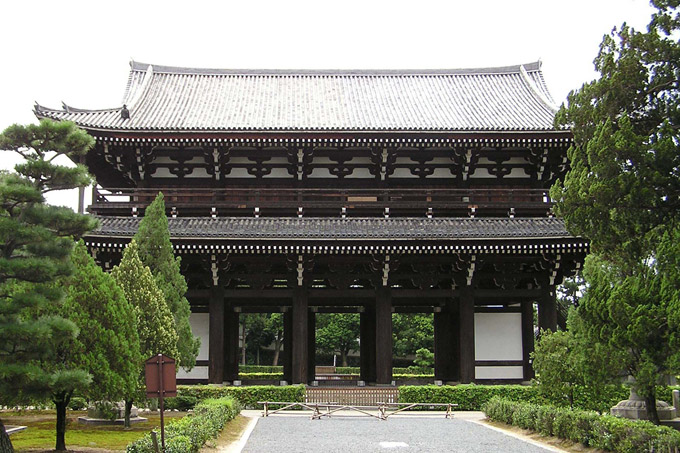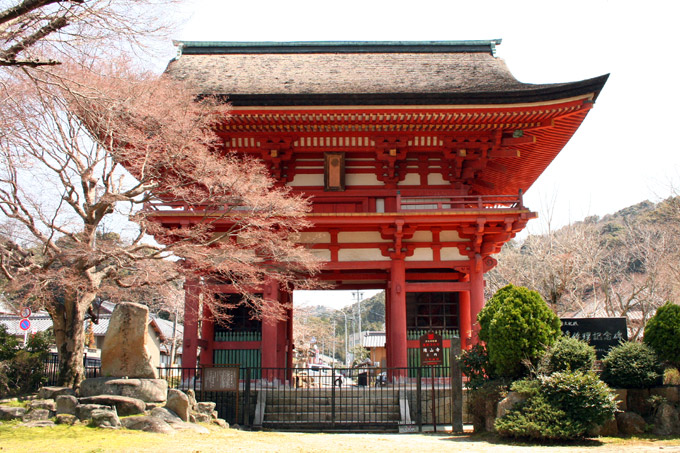|
||
 |
||

Toufukuji Sanmon 東福寺三門 (Kyoto)

Takisanji Sanmon 滝山寺山三門 (Aichi)
(C)2001 Japanese Architecture and Art Net Users System. No reproduction or republication without written permission.
掲載のテキスト・写真・イラストなど、全てのコンテンツの無断複製・転載を禁じます。
|
||||||
| sanmon 三門 | ||||||
| KEY WORD : architecture / gates | ||||||
| Also written 山門; often called *sangedatsumon 三解脱門 meaning enlightenment gate. Main gate at a Zen temple. The size of the gate can be equated with the status of the Zen temple: the highest rank with a 2-storied 5x2-bay 3-entrance gate with a l-bay square shelter covering entrance to stairs to second story on each side *sanrou 山廊, Toufukuji Sanmon 東福寺三門 (1405), Kyoto; the middle rank with a 2-storied, 3x2-bay l-entrance gate, Takisanji Sanmon 滝山寺三門 (Kamakura period), Aichi prefecture and a low ranking small temple with a single-storied, lx2-bay l-entrance gate. "Gedatsu 解脱" means emancipation from misery and illusion of three worlds resulting in enlightenment. Usually a Buddhist statue and the sixteen arhats *juuroku rakan 十六羅漢 are enshrined. Guardian figures are placed in the side bays of the first story of the 5x2 and 3x2 bay gates. Ceremonies are held on the second story. Since the main hall *hondou 本堂 symbolizes the houkuu 法空 and nirvana nehan 涅槃, the entrances to it through the sanmon symbolize the three gates sangedatsumon ; kuumon 空門, musoumon 無相門 and musamon 無作門. | ||||||
 Toufukuji Sanmon 東福寺三門 (Kyoto)
 Takisanji Sanmon 滝山寺山三門 (Aichi)
|
||||||
| REFERENCES: | ||||||
| EXTERNAL LINKS: | ||||||
| NOTES: | ||||||
(C)2001 Japanese Architecture and Art Net Users System. No reproduction or republication without written permission. 掲載のテキスト・写真・イラストなど、全てのコンテンツの無断複製・転載を禁じます。 |
||||||